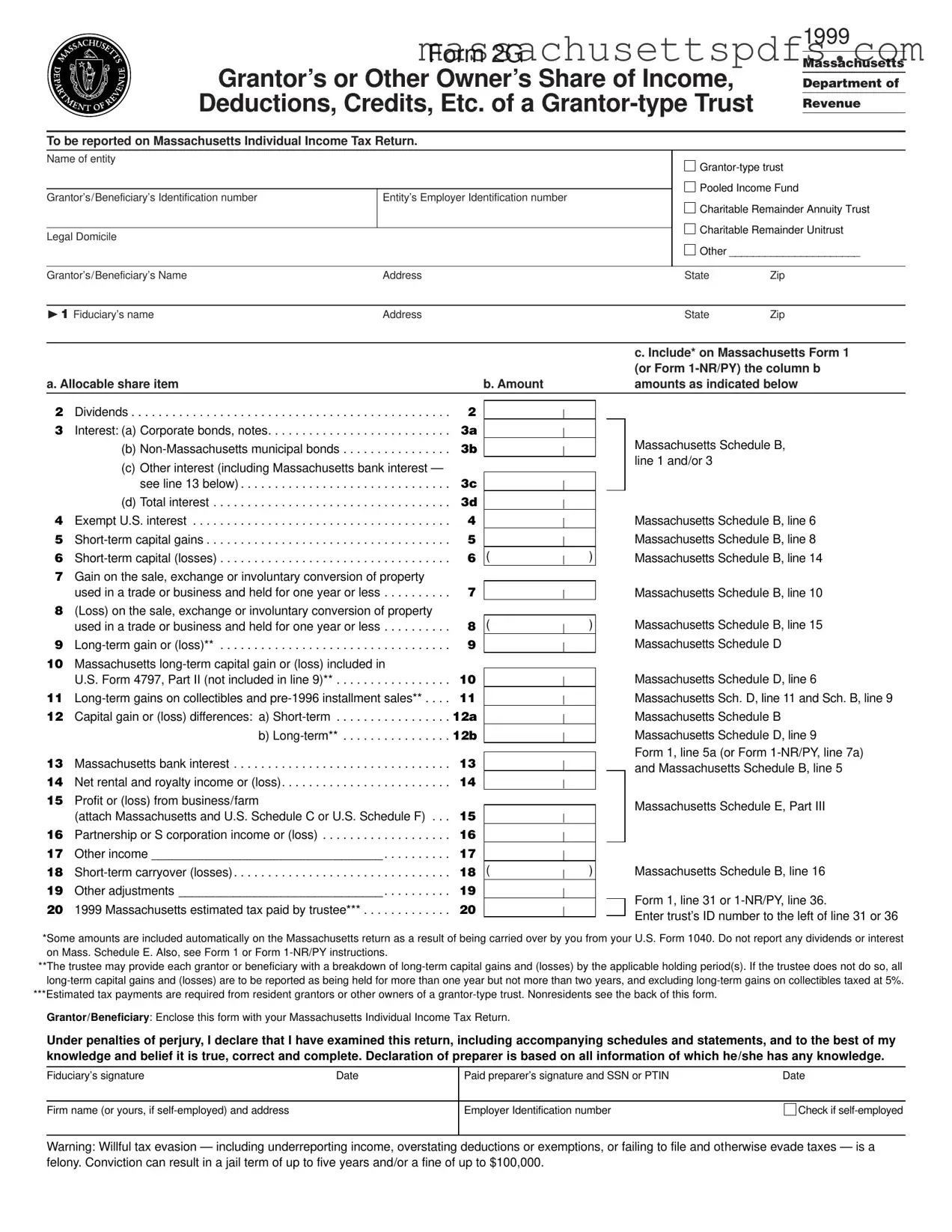Official Massachusetts 2G Template
The Massachusetts 2G form is used to report the income, deductions, and credits of a grantor-type trust on an individual's Massachusetts income tax return. This form must be filed by the trustee and a copy sent to the grantor or other owners, who are responsible for including this information in their tax filings. Understanding how to accurately complete the 2G form is essential for compliance with state tax regulations.
To get started on filling out the form, click the button below.
Launch Editor Here
